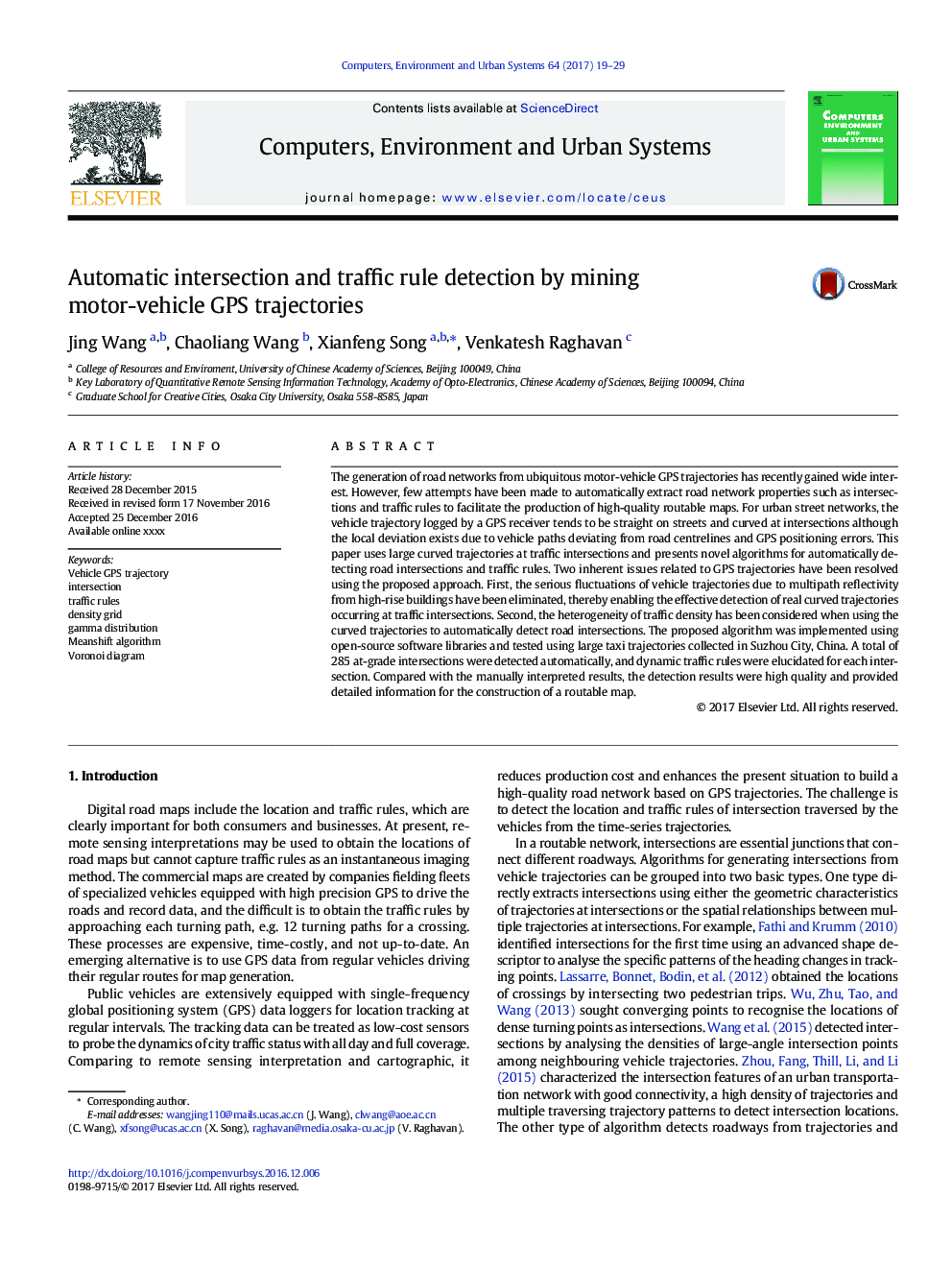| Article ID | Journal | Published Year | Pages | File Type |
|---|---|---|---|---|
| 4965134 | Computers, Environment and Urban Systems | 2017 | 11 Pages |
Abstract
The generation of road networks from ubiquitous motor-vehicle GPS trajectories has recently gained wide interest. However, few attempts have been made to automatically extract road network properties such as intersections and traffic rules to facilitate the production of high-quality routable maps. For urban street networks, the vehicle trajectory logged by a GPS receiver tends to be straight on streets and curved at intersections although the local deviation exists due to vehicle paths deviating from road centrelines and GPS positioning errors. This paper uses large curved trajectories at traffic intersections and presents novel algorithms for automatically detecting road intersections and traffic rules. Two inherent issues related to GPS trajectories have been resolved using the proposed approach. First, the serious fluctuations of vehicle trajectories due to multipath reflectivity from high-rise buildings have been eliminated, thereby enabling the effective detection of real curved trajectories occurring at traffic intersections. Second, the heterogeneity of traffic density has been considered when using the curved trajectories to automatically detect road intersections. The proposed algorithm was implemented using open-source software libraries and tested using large taxi trajectories collected in Suzhou City, China. A total of 285 at-grade intersections were detected automatically, and dynamic traffic rules were elucidated for each intersection. Compared with the manually interpreted results, the detection results were high quality and provided detailed information for the construction of a routable map.
Related Topics
Physical Sciences and Engineering
Computer Science
Computer Science Applications
Authors
Jing Wang, Chaoliang Wang, Xianfeng Song, Venkatesh Raghavan,
